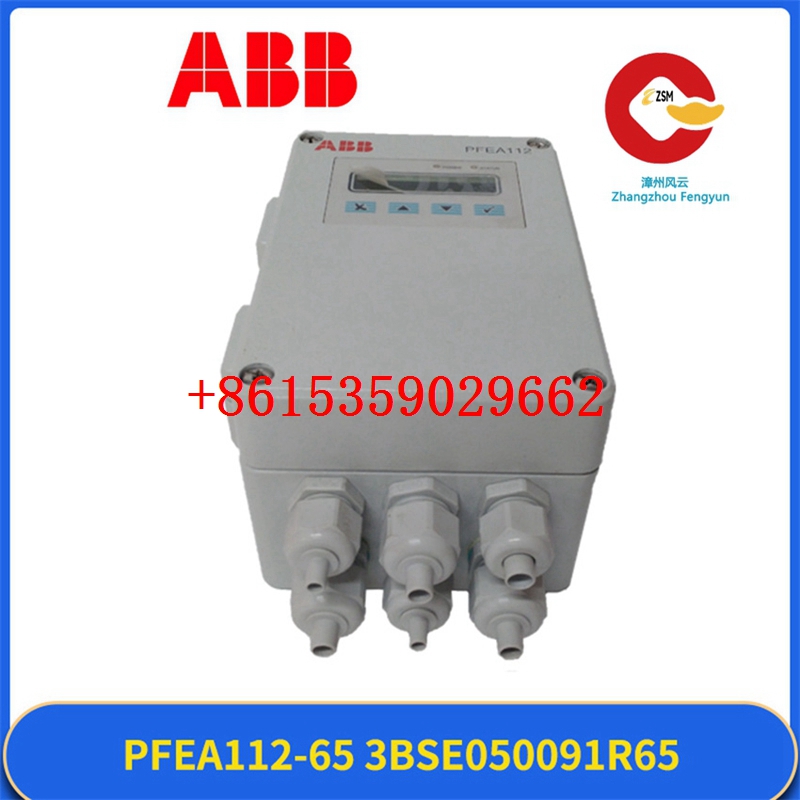Technical Parameters of ABB DSP P4LQ Control Card (HENF209736R0003 / HENF436961P106)

1. General Overview
The ABB DSP P4LQ control card, identified by part numbers HENF209736R0003 and HENF436961P106, is a high – performance component designed for advanced control applications within ABB’s industrial automation systems. It plays a crucial role in ensuring precise and efficient operation of machinery and processes.
2. Processor and Computing Capabilities
- DSP (Digital Signal Processor): The card is equipped with a powerful DSP core. The DSP is specifically optimized for real – time signal processing tasks, such as filtering, modulation, and control algorithm execution. It can handle complex mathematical operations at high speeds, with a processing clock rate that allows it to process a large number of samples per second, ensuring rapid response to input signals.
- Computing Power: With its dedicated DSP architecture, it offers a high level of computing power. It can perform multiple parallel calculations, which is essential for multi – axis control systems or applications that require simultaneous processing of multiple sensor inputs.
3. Input/Output (I/O) Features
- Digital Inputs: The control card provides a certain number of digital input channels. These channels can be used to receive signals from various sensors, such as limit switches, proximity sensors, or digital encoders. The input voltage range is designed to be compatible with standard industrial signal levels, ensuring reliable signal detection.
- Digital Outputs: It has a set of digital output channels that can be used to control actuators, relays, or other digital devices. The output current and voltage ratings are sufficient to drive a wide range of industrial loads, and the outputs can be configured for different operation modes, such as pulse – width modulation (PWM) for speed control of motors.
- Analog Inputs: The card is equipped with analog input channels for receiving continuous – valued signals from analog sensors, such as temperature sensors, pressure sensors, or position sensors. The analog – to – digital converter (ADC) on the card has a high resolution, allowing for accurate measurement of small signal changes.
- Analog Outputs: It also provides analog output channels that can be used to generate continuous control signals for analog devices, like variable – frequency drives (VFDs) for motor speed control. The digital – to – analog converter (DAC) on the card ensures high – precision output signal generation.
4. Communication Interfaces
- Ethernet Interface: The control card has an Ethernet port, which enables it to communicate with other devices in the industrial network, such as programmable logic controllers (PLCs), human – machine interfaces (HMIs), or supervisory control and data acquisition (SCADA) systems. It supports standard Ethernet protocols, allowing for fast and reliable data exchange over local area networks (LANs) or wide area networks (WANs).
- Serial Communication Ports: In addition to Ethernet, it may have serial communication ports, such as RS – 232 or RS – 485. These ports are useful for connecting to legacy devices or for short – range communication in industrial environments where simplicity and cost – effectiveness are important.
5. Power Requirements
- Input Voltage: The control card operates on a specified input voltage range, which is typically in line with standard industrial power supplies. This ensures compatibility with a wide range of power sources in industrial facilities.
- Power Consumption: It has a defined power consumption level, which is important for system designers to consider when planning the power distribution within the control cabinet. The power consumption varies depending on the operating mode and the load on the I/O channels.
6. Environmental Specifications
- Operating Temperature Range: The card is designed to operate within a specific temperature range, which is suitable for most industrial environments. It can withstand both high and low temperatures, ensuring reliable performance even in challenging conditions, such as in a factory with high ambient heat or in a cold storage facility.
- Humidity Tolerance: It has a certain level of humidity tolerance, which is important for preventing damage from moisture in the air. This allows the control card to be used in environments with varying humidity levels, from dry to moderately humid.
- Vibration and Shock Resistance: The card is built to withstand a certain level of vibration and shock, which is common in industrial machinery. This ensures that it can continue to function properly even when the equipment it is controlling is subject to mechanical vibrations or sudden impacts.
7. Software and Programming Support
- Compatible Software Platforms: The ABB DSP P4LQ control card is compatible with ABB’s proprietary software platforms, as well as some standard industrial automation software. These software platforms provide tools for programming the control algorithms, configuring the I/O channels, and monitoring the system operation.
- Programming Languages: It supports various programming languages for developing control applications, such as ladder logic, structured text, and function block diagrams. This flexibility allows engineers to choose the programming language that best suits their application requirements and their level of expertise.
In summary, the ABB DSP P4LQ control card (HENF209736R0003 / HENF436961P106) is a feature – rich and reliable component that offers high – performance computing, versatile I/O capabilities, robust communication interfaces, and environmental durability, making it suitable for a wide range of industrial control applications.


